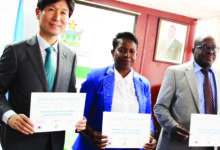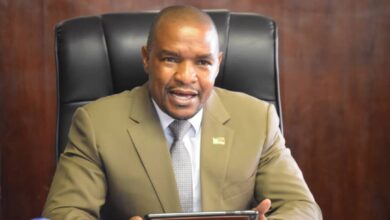“Bridging the Gap: Addressing Challenges in Rural Education in Zimbabwe”
Date: 23 March 2024
Staff Reporter
The suffering of not achieving the intended aims and the agony of waking up early for nearly 11 years with the hope of a bright future exceed the time wasted chasing unrealized aspirations. This is typical in many rural schools that are unable to acquire direct electricity and incapacitated.
In the November 2023 Zimbabwe School Examinations Council Ordinary Level exams, several schools had zero percent pass rates; however, the overall pass percentage rose by 4.3 percent over the previous year.
Primary and Secondary Education Minister Torerayi Moyo said, “Honorable Speaker, what we are doing as a ministry is to look at those schools that continually have a zero percent pass rate,” in response to queries posed by lawmakers in the National Assembly in February 2024. We have a wide range of actions. Research investigations are needed to determine the root causes of 0 percent pass rates, including if the schools’ lack of instructional resources or learning materials is the main culprit.
“We have observed, Honorable Speaker, that schools in rural areas typically receive a zero percent pass rate due to significant differences between urban and rural education.”
He declared that the government will aggressively support online education and information and communication technology in rural areas.
UNICEF solarized 128 disadvantaged schools, ensuring improved access to energy and support for digital learning for children.
According to an interview with a sociology expert, Mr. Macdonald Makoni, one major restraint experienced by rural students is the great distances between home and school. He emphasized that schools in rural Mashonaland West, for example, are 10 kilometers apart, which can pose issues for students.
Another major concern is that the curriculum established in 2018-2023 does not fit into the narrative of rural people, giving an edge to metropolitan students. The expert criticized aspects of the curriculum, such as urban studies and CALA, for contributing to the low pass rate in rural areas.
In a recent interview with Mr. Macdonald Makoni, a prominent sociology expert, several key challenges facing rural students in Mashonaland West, Zimbabwe, were brought to light. Among these challenges, two significant factors emerged: the substantial distances between home and school and the mismatch between the curriculum and the rural narrative.
Firstly, Makoni highlighted the geographical barrier of distance that rural students encounter daily. With schools located approximately 10 kilometers apart in rural Mashonaland West, many students face arduous journeys to access education. This distance not only consumes time but also presents logistical and financial burdens for families, especially those with limited resources.
Moreover, Makoni emphasized the disparity between the curriculum and the lived experiences of rural communities. The curriculum, established between 2018 and 2023, appears to favor urban perspectives, leaving rural students at a disadvantage. Subjects like urban studies and CALA (Curriculum-Aligned Learning and Assessment) may not resonate with rural students, resulting in a lower pass rate compared to their metropolitan counterparts.
Makoni proposed several solutions. Improving infrastructure, such as building more schools or establishing boarding facilities closer to rural communities, can reduce the commuting distance for students.
Makoni suggested revising the curriculum to incorporate elements that reflect rural realities and experiences. This might involve integrating local knowledge, agricultural practices, and community development studies into the curriculum.
Providing professional development opportunities for teachers to understand and adapt teaching methods to rural contexts can enhance the learning experience for rural students.
Leveraging technology, such as online learning platforms or educational apps, can supplement traditional teaching methods and provide access to educational resources for students in remote areas.
By implementing these solutions, policymakers and educators can work towards creating a more inclusive and equitable education system that caters to the needs of rural students in Zimbabwe. Ultimately, addressing the challenges of distance and curriculum mismatch is essential for ensuring equal access to quality education. Community engagement involving local communities in the education process can foster a sense of ownership and support for schools, leading to improved attendance and academic outcomes.









